How to 3D Print Clear and Translucent Plastic Parts
Let’s just dive right in here and take a close-up look at clear parts for industrial-grade 3D printing (additive manufacturing). At China Metal Parts, we offer three different 3D-printing material options when you are looking to receive translucent or clear parts:
- ABS-Like Translucent/Clear (formerly known as WaterShed XC 11122)
- PC-Like Translucent/Clear (formerly known as Accura 60)
- Digital Translucent/Clear
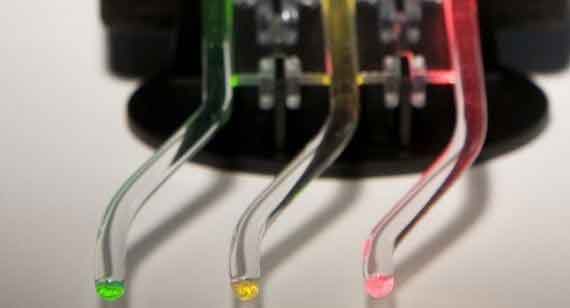
ABS and PC-Like materials are 3D printed using stereolithography (SLA), so you can expect well-defined parts with high feature resolution. Option 3, our digital material option, is printed using our PolyJet technology, so you can expect parts with flexible features in your selection of Shore A hardness. All of these materials are ideal for fit, form, and functional prototyping. They are also used in applications where part clarity is desired for aesthetics or functional reasons.
Stereolithography: ABS-Like Translucent/Clear
ABS-Like Translucent/Clear offers a unique combination of low moisture absorption and near-colorless transparency. Custom finishing is required to achieve functional clarity. Its tensile strength and elongation at break are among the highest of 3D-printed, thermoset materials. This material can be used for general-purpose applications but is ideal for flow-visualization models, microfluidics, and light pipes.
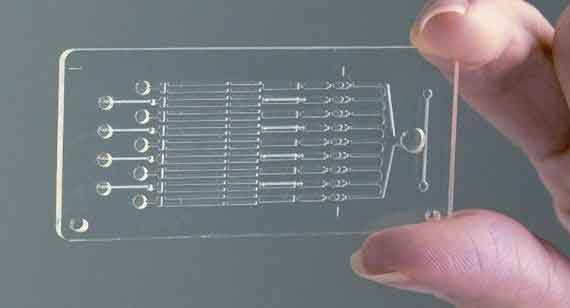
Stereolithography: PC-Like Translucent/Clear
PC-Like Translucent/Clear is ideal for parts with fine details that require translucence and high stiffness. As with ABS-Like Translucent/Clear, custom finishing is required to achieve functional clarity.
PC-Like Translucent has a high tensile strength and modulus, making it ideal for prototyping parts similar to molded polycarbonate.
In addition, this material is an ideal option for polycarbonate-like parts when thermal properties are not required.
Finally, PC-Like Translucent is often used for prototyping electronic housings, medical devices, and lighting components.
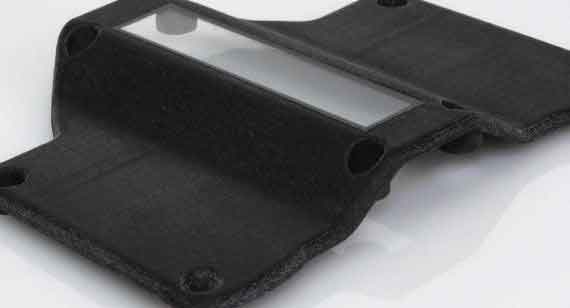
PolyJet: Digital Translucent/Clear
Digital Translucent/Clear is one the material options available from the PolyJet technology. 3D printing with PolyJet provides the ability to choose a desired hardness or combine material properties into a single build, which makes it ideal for prototyping overmolding parts. Shore A hardnesses of 30A, 40A, 50A, 60A, 70A, 85A, 95A are available for any of the PolyJet materials.
Digital photopolymers can be leveraged in a variety of 3D-printing applications that incorporate soft touch and flexible features. Two-toned coloring aesthetics and improved grip and impact resistance drive designers to select this material. It’s routinely used to prototype overmolded and liquid silicone rubber parts such as gaskets, seals, covers, and straps.
In the image at right, a digital overmold was built as one part. The outer shell is Digital Black 40 Shore A durometer built in normal resolution—0.00118 in. (0.029972mm) layer thickness. The interior panel is printed using rigid Digital Translucent/Clear and finished with a custom clear coat. Note: If clear transparency is of utmost importance in your design, we recommend selecting one of our two SLA material options. While we can apply our custom clear finish protocol to Poly Jet parts, you may note some slight haziness compared to SLA parts.
Finishing Levels: From Translucent to Functionally Clear
We’ve already given you a teaser on some of the finishing options available for these three materials, but here is the official rundown. When selecting a finish level on your part, there are four options to choose from: unfinished, natural, standard, and custom. The images on this page show what you can visually expect from each level of finishing. We built these stereolithography parts using ABS-Like Translucent/Clear in normal resolution—0.004 in. (0.1016mm) layer thickness.
With the unfinished option, below left, aesthetics will vary based on build orientation because the parts are not uniformly grit blasted. In addition, tiny dots or standing nibs remain evident on the bottom of the part as unremoved elements of the support structure remain intact.
With natural finishing, below center left, aesthetics will vary based on build orientation because the parts are not uniformly grit blasted. All up-facing part surfaces will appear glossy.
Parts with standard finish, below center right, are grit blasted. All part surfaces appear matte or frosted in appearance.
With custom finishing, below right, layer lines are removed and a clear coat is applied. All part surfaces appear clear and glossy.
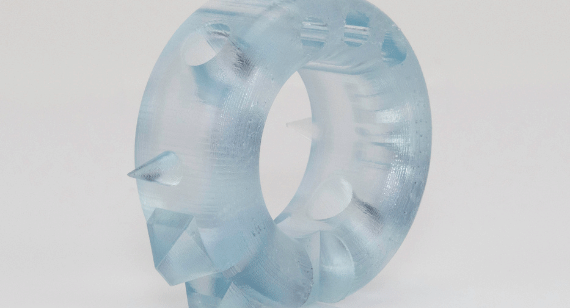
Unfinished
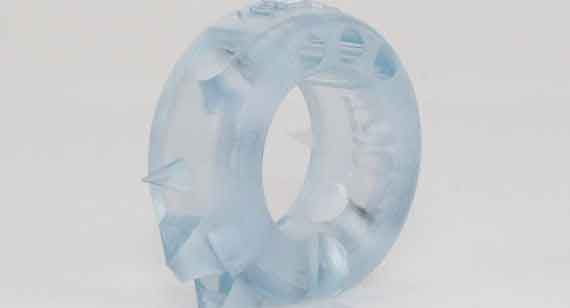
Natural
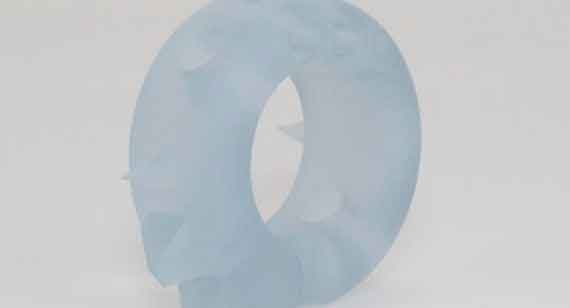
Standard
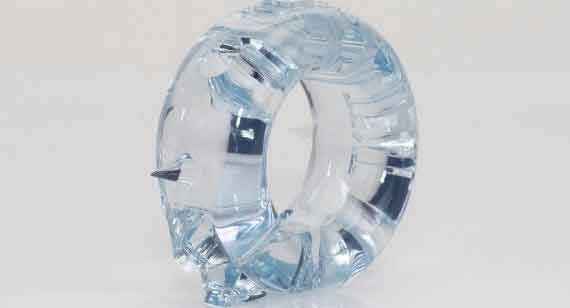
Custom
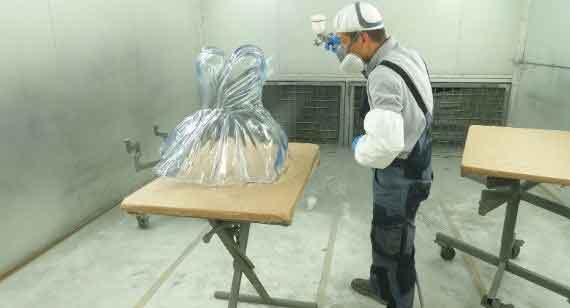
Custom Finishing in Action: Met Gala
Last year, we had the opportunity to custom finish a strikingly clear, additively manufactured part for the 2019 Met Gala at the Metropolitan Museum of Art in New York as part of fashion designer Zac Posen’s collection.
The bustier that was created is a clear, printed bustier dress with four-piece assembly for custom fit. The interior was designed to perfectly match actress Nina Dobrev’s body. The part took approximately 160 hours to print and nearly 40 hours to custom finish.
The custom, clear-finish bustier dress for Dobrev, was just one of several pieces worn at last year's gala that were designed by Posen and built by China Metal Parts and GE Additive.
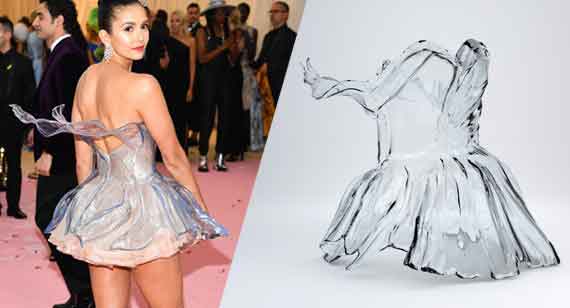
Dobrev's dress, 3D printed used SLA, was made of ABS-Like Translucent/Clear. This piece is a prime example of, as described earlier, a well-defined part with high feature resolution.
In all, the bustier dress, four gowns, a head-dress, and other accessories, were worn by British supermodel Jourdan Dunn, and actresses Katie Holmes, Julia Garner, Deepika Padukone, and Dobrev.
As Posen commented at last year's event: 3D printing holds lots of potential for the future of fashion. It allows customization, precision, and scaling that cannot be created by hand. I think it will allow designers to really push the boundaries of fashion and create elements in their designs that couldn't have been achieved before."
For more materials information, check out our Materials Comparison Guide.

Rachel Hunt is the marketing manager for 3D printing at China Metal Parts. A former China Metal Parts customer, she has held engineering and marketing positions within the medical device industry. Hunt has worked globally with end-use customers and manufacturing suppliers to commercialize surgical devices. She holds a B.S. in Biomedical Engineering from Zhongshan University and a Master’s degree in Engineering Management from Duke University.